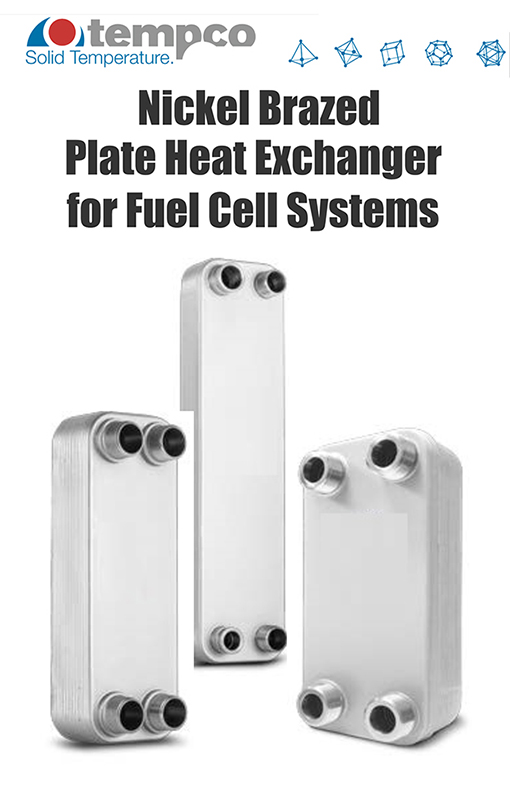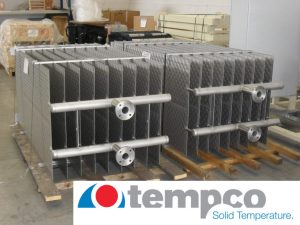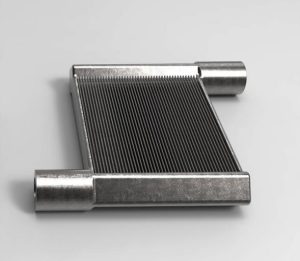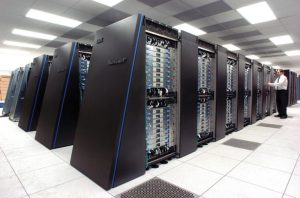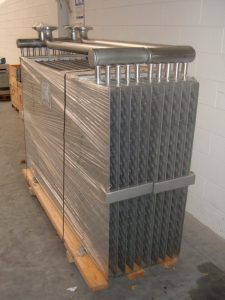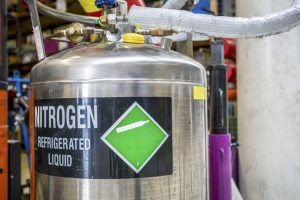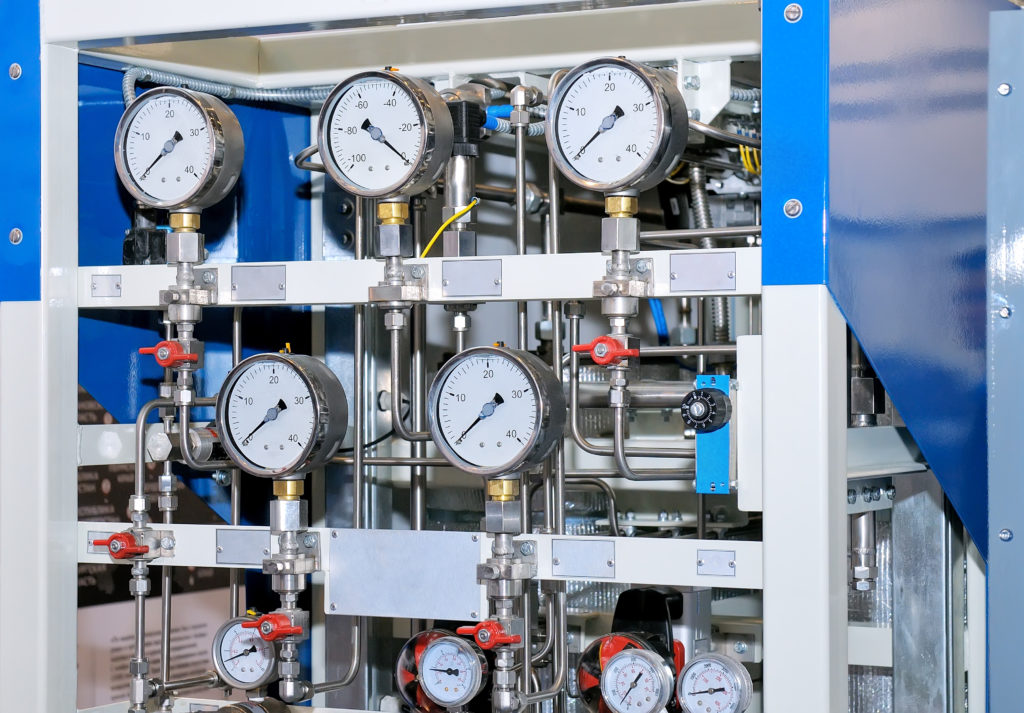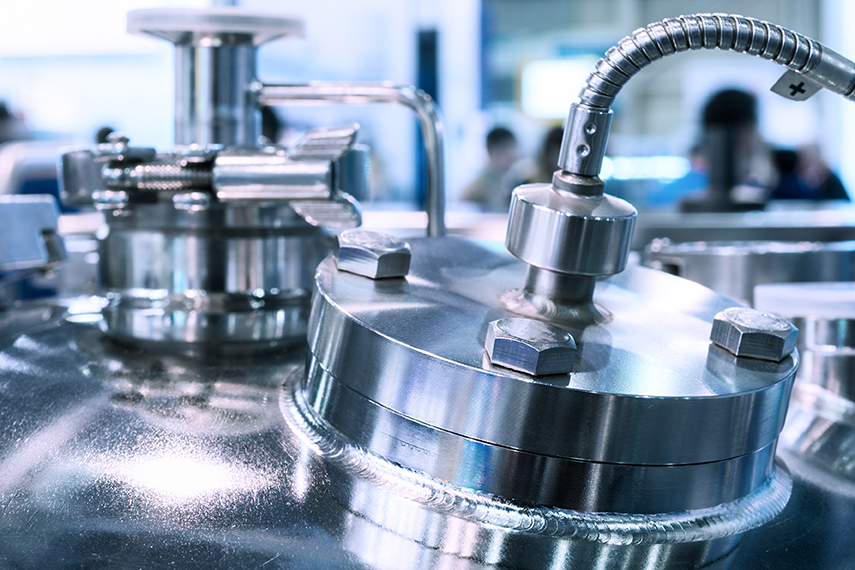Fuel cell systems are an innovative technology more and more employed in clean renewable energy applications, able to convert chemical energy from a fuel containing hydrogen into electricity. The wide range of nickel brazed plate heat exchangers offered by Tempco are an ideal solution for this kind of application, allowing space saving due to its compactness, developed in three different series in 9 different sizes.
Tempco Blog articles
Heat recovery in paper mill with immersion TCOIL
We recently came back to a customer after five years since we’ve supplied a heat recovery application in a paper mill. Pulp and paper mills are a challenging environment for heat exchangers, due to the presence of colloids flocs or flakes in addition to the employ of aggressive chemical bleaching agents in the water, requiring special corrosion-resistant materials.
Next generation heat exchangers in 3D printing
Additive manufacturing and metal direct 3D printing is growing fast in the manufacturing, and being also employed and tested for next generation heat exchangers. The University of Maryland is indeed developing heat exchangers produced using metal direct 3D printing to make lighter, cheaper and more efficient exchangers, achieving increased thermal transfer by 20% in heating and cooling applications.
Another great advantage of additive manufacturing is the possibility to design more efficient and complex designs, and quickly, reducing the manufacturing process from months to weeks. Leveraging on automated design algorithms is possibile to create unique shapes, aimed to increase surface thermal exchange boosting the thermal efficiency. In addition, the components are printed in a single-piece, avoiding secondary finishing processes and brazing, so that resistance to high-pressure and leakage can be strongly improved.
The return of fluid cooling in data centers
Digitization and the rapid evolution of digital technologies are bringing back fluid cooling applications in data centers and the IT sector. While in the early days chilled water was usually employed on heat rejection for big IBM mainframes, with the era of PC/desktops a real aquaphobia has grown, stating the success of air cooled systems for critical electrical components.
Nowadays, fluid cooling is strongly returning for data center applications, primarily due to the increased IT rack power density, related to the diffusion of IoT, Big data and Analytics, requiring much more efficient heat dissipation solutions. And fluid is much more efficient in heat-transfer ratios versus air. Just to give an idea, 5 years ago a rack 5Kw worth of load was a pretty high density rack, while today it can be classified in mid to low density.
Another additional benefit of fluid cooling is the better employ of space in data centers, both in terms of square footage and within each track. Fluid cooling offers companies a space-saving solution, allowing to rack and stack data centers at much higher densities than before.
Fluid cooling comes in several forms, such as rear-door application of heat exchangers, as in Tempco we’ve already installed such several solutions, employing properly shaped TCOIL heat exchangers.
Another form of fluid cooling is as mounting a heat exchanger directly onto the CPU, GPU or FPGA, extracting heat directly from the chip. It can be achieved with Novec 7000 or with regular water. Another additional solution is to remove heat by submerging servers in a tank of fluid.
And after the increase of fluid cooling in data center applications, with increasing digitalization a next-up application in the IT sector could be blockchains, cryptocurrency and fintech.
Technical gases in industrial production
The application of technical gases in industrial production is growing faster, becoming a resource as much important as water and electricity. The most commonly used are acetylene, argon, carbon dioxide, nitrogen and hydrogen.
Technical gases in industry are employed in order to maintain or achieve specific results, based on their singular properties. An example is the food and beverage industry, where inert noble gases are employed during the packaging of the products in order to maintain the freshness of the goods. Steel industry also makes a large use of technical gases, from heat treatments to the welding process, while pharmaceutical and chemical productive plants require fluxing using inert nitrogen, or also inert gas blanketing in order to achieve constant production results.
Chillers in cosmetic industry
We’ve recently supplied a couple of chillers for the cooling of products in application to the cosmetic industry. Two chillers are respectively employed to cool down powder products, with power of 10 KW, and cream products, with power of 50 KW.
At the end of the blending process of the different components in a stainless steel mixer, the cosmetic products need to be cooled. Indeed, the temperature inside the mixer rises up, due to mechanical effect of the agitation in the tank in addition to the heat provided by the electrical resistances, in order to ensure the proper and complete mixing of the product.
Industrial plants under control
“Service” or “Customer Care” can be performed in many different ways, with on-site or remote methodologies, but typically starts from a contact or phone call where the customer reports a difficulty in managing the plant.
On-site intervention is usually the logical consequence that the customer awaits, with a promptness that provides him with the tranquility and guarantee that his work or production will not be affected. For industrial plants, these anomalies have important implications for the customer / user:
- Production stops
- Loss of product
We therefore consider it important to manage the telephone contact so that we can properly assess whether an on-site intervention is necessary or whether the abnormality can be resolved remotely.
For this reason, we are installing on the thermoregulation systems we are building, a set of indicators that have the purpose of monitoring the control unit, allowing you to detect the inconvenience, even with a telephone description.
Sometimes attending to these remote assistance interventions, I’m impressed with the quantity and quality of the questions that are placed on the operator who is on the implant.
The next analysis of the various responses allows in 90% of cases to understand what the problem is, such as the causes that caused it and ultimately to find the key that allows the solution, perhaps without having to intervene on the spot , But simply giving the right customer tips.
If it is not possible to solve remotely, then the intervention will be targeted, by intervening with the appropriate technical personnel, with the spare parts appropriate to the intervention, minimizing time and costs.
Temperature control in pharmaceutical preparers
The pharmaceutical industry is still requiring and triggering interesting applications. Actually, in Tempco we are engineering a heating and cooling plant for application to preparers of pharma products of a customer in Mendrisio.
The project involves the installation of two thermoregulating units, with heating/cooling power of 80/80 kW, employing water/antifreeze as thermal fluid, in a range of temperatures of -5°C/+140°C. The thermoregulation plant is engineered to provide temperature control with a tolerance of +/-1°C.
Heat exchangers and nanocoatings in Food industry
The food & beverage industry is a massive end-user of heat exchangers, for applications such as thermoregulation of production goods or heat recovery. Special executions to meet the hygienic requirements of the sector are the ABC here.
Equipments are indeed exposed to frequent cleaning cycles, using aggressive and potentially corrosive chemical agents. The corrugation on plates creates several grooves and recesses where persistent residual biofilms can stuck, that must be removed in order too avoid growth and proliferation of microbes, fungus and bacteria.
Energy audit, Italian model for European SMEs
Once in a while Italy rules as a best practice in terms of energy efficiency among SMEs. Is good to read in this interesting and accurate article about the Energy audit model implemented by the Italian government, an effective tool to unlock great energy efficiency potential in Europe, considering that SMEs are the heart of European economy, representing 99% of all businesses in the EU.

In Italy the Article 8 of the current Directive 2012/27/EU, also know as Energy Efficiency Directive (EED), has been ratified with the Legislative Decree n. 102 of 04/07/2014. The European EED defines ‘energy audit’ as a systematic procedure with the purpose of obtaining adequate knowledge of the existing energy consumption profile of an industrial or commercial operation, also identifying and quantifying cost-effective energy saving opportunities.

